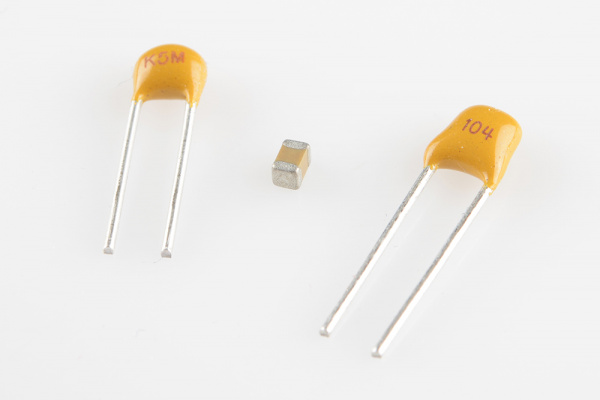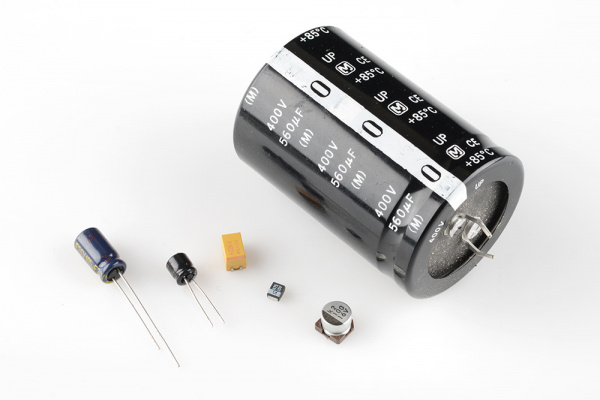Ampere
The Ampere, A, is a SI base unit used for measuring electrical current, I, and is one of the seven SI base units. The ampere is the amount of electric charge passing a point in an electric circuit per unit time with one coulomb per second (C/s) being equal to one ampere [1].
The current drawn by a usual constant-voltage system is typically determined by the power, watts (W), consumed by the system and the operation voltage, V. Some everyday examples include; 12 V DC motor vehicle headlights using 5 A each, 120 V AC toaster at 2kW using 16.6 A, or a hearing aid, typically 1mW at 1.4 V, using 0.7 mA [1].
12 V DC Motor Vehicle Headlights |
|---|
Hearing Aid
[https://www.amazon.com/Invisible-Rechargeable-Cancelling-Aioze-Amplifier/dp/B08F757ST7]
[2] | 120 V AC Toaster [3] |
|---|
[https://chefequipment.com/products/waring-heavy-duty-4-slot-toaster-2200w-120v]
Hearing Aid [4] | |
|---|---|
Volt
The Volt, V, is a SI derived unit used to measure voltage, the potential for energy to move [https://www.mrsolar.com/what-does-volts-amps-ohms-and-watts-mean/]. The Volt in SI base units is 5]. The Volt in SI base units is 1 V = kg⋅m2⋅s−3⋅A-1 , which is equivalent to watt per ampere (W/A) and joule per coulomb (J/C) [https://www.mrsolar.com/what-does-volts-amps-ohms-and-watts-mean/][https://en.wikipedia.org/wiki/International_System_of_Units]Voltage is 5][6].
Voltage is the pressure from an electrical circuit's power source that moves electrons, current, through a closed loop. This enables electrons to do work such as illuminating a light or heating an electric stove top [https://www.fluke.com/en-ca/learn/blog/electrical/what-is-voltage].7].
| Light Bulb Circuit [7] |
|---|
Ohm
The Ohm, Ω, is a SI derived unit for electrical resistance, R. The ohm in SI base units is 1 Ω = kg⋅m2⋅s−3⋅A−2 , which is equivalent to volts per ampere (V/A) [https://en.wikipedia.org/wiki/Ohm].A 8].
A resistor is a passive electrical component that implements electrical resistance into a circuit. These are used to reduce current flow and divide voltages [https://en.wikipedia.org/wiki/Resistor9]. A resistors values and tolerance will be indicated with coloured bands around the component body. Using the example figure below, there are four coloured bands. The first two bands represent the significant digits of the resistor value, the third band is the multiplying factor and the forth band indicates a tolerance. the colour of each band represents a different number which can be found in the colour code chart below [https://eepower.com/resistor-guide/resistor-fundamentals/what-is-a-resistor/#10].
| Resistor with a resistance Resistance of 5600 ohm Ohm with 2% tolerance[https://eepower.com/resistor-guide/resistor-fundamentals/what-is-a-resistor/#]Tolerance [10] |
|---|
| Resistor Colour Code Chart [https://eepower.com/resistor-guide/resistor-standards-and-codes/resistor-color-code/11] |
|---|
Water Flow Analogy
A good way to understand voltage, resistance and current is to compare a given circuit to a closed system of water-filled pipes or a "water circuit", that is pressurized by a pump [https://www.mrsolar.com/what-does-volts-amps-ohms-and-watts-mean/]. In this 12]. In this analogy, current is replaced with flowing water or flow rate, voltage is replaced with pressure and resistance is determined by the size of the water pipe.
Voltage is an expression of the available energy per charge which drives the current around a closed circuit, similar to how pressure drives or forces water through pipes. Increasing the resistance, similar to decreasing the size of a pipe, will proportionally decrease the current, or in a water circuit the water flow. This analogy also holds true when comparing Ohm's Law and Poiseuille's Law where Ohms law is: Current (I) = Change in Voltage (ΔV) / Resistance (R) and Poiseuille's Law is: Flow Rate (F) = Change in Pressure (ΔP) / Resistance (R) [https://www.mrsolar.com/what-does-volts-amps-ohms-and-watts-mean/]12].
| Diagram Comparing a Water Circuit to an Electrical Circuit [https://www.mrsolar.com/what-does-volts-amps-ohms-and-watts-mean/] | 12] |
|---|---|
Watt
The watt, W, is a SI derived unit used for measuring power or radiant flux. The watt in SI based units is 1 W = 1 kg⋅m2⋅s−3 , which is equivalent to a joule per second (J/s). The watt is used to quantify the rate of energy transfer in a system [https://en.wikipedia.org/wiki/Watt13].
The terms power and energy are closely related but are different physical quantities. Power is the rate at which energy is generated or consumed and is therefore measured in units that represent energy per unit time. For example, when a light bulb with a power rating of 100 W is on for an hour, the energy used is 100 watt hours (W·h) which is enough energy to power a 40 watt bulb for 2 and a half hours [https://en.wikipedia.org/wiki/Watt13]. Another example is the rated power of power stations. This value represents the maximum power output a station can achieve at any point in time and uses units of power. However, a power stations annual energy output would be recorded using units of energy, not power [https://en.wikipedia.org/wiki/Watt].13].
In terms of electromagnetism, a watt is equal to the rate at which electrical work is performed when one ampere (A) flows across an electrical potential difference of one volt (V). This means that one watt can also be written as one volt-ampere (V·A), however this unit is used for a different quantity from the real power of an electrical circuit. Two additional unit conversion can be acquired when using Ohm's law [https://en.wikipedia.org/wiki/Watt].13].
| Watt Equation [13] | Additional Conversions [13] |
|---|---|
Coulomb
The coulomb, C, is a SI derived unit used for measuring electric charge. One coulomb is equal to the amount of charge from a current of one ampere flowing for one second. The coulomb in SI base units is 1 C =s⋅A [https://energyeducation.ca/encyclopedia/Coulomb14].
One coulomb is equal to the charge on 1.6241·1018 protons. This also means that one proton has a charge of 1.6·10-19 C. Electrons share the same magnitude of charge but are instead negatively charged [https://energyeducation.ca/encyclopedia/Coulomb14].
A coulomb is a huge charge. To help quantify this, if two 1 could charges were 1 meter metre apart, they would exert a force of 9·109 newtons. That's over two million tonnes which is about 720 times as much as the thrust of a space shuttle solid rocket booster during lift off [https://energyeducation.ca/encyclopedia/Coulomb14]. Other everyday examples of the coulomb include; static electricity from rubbing materials together typically only generating a few microcoulombs, the amount of charge traveling through a lightning bolt is usually around 15 coulombs but can be as high as 350 coulomb, and the amount of charge that travels through a typical alkaline AA battery from being fully charges to discharged is about 5 kilocoulombs or 5000 coulombs [https://en.wikipedia.org/wiki/Coulomb].15].
Static Electricity Example [16] | Lightning Bolt [17] | AA Alkaline Battery [18] |
|---|---|---|
Farad
The farad, F, is a SI derived unit for measuring electrical capacitance, the ability to store an electric charge . The farad in SI base units is 1 F = 1 s4⋅A2⋅m−2⋅kg−1, which is equivalent to coulomb per volt (C/V) and joule per volt squared (J/V2) [https://en.wikipedia.org/wiki/Farad]. 19].
Capacitor values range from 0.1 pF to 5000 F (5 kF), but even a millifarad (0.001 F) capacitor is considered very large. For this reason, most capacitors are between the picofarad to microfarad range [https://en.wikipedia.org/wiki/Farad][https://learn.sparkfun.com/tutorials/capacitors/all19][20]. Supercapacitors or ultracapacitors are very high-capacity capacitors with values greater than 1 farad and up to several kilofarads with current technology, such that they can be used as a replacement for batteries for short-term energy storage, like energy recovery systems. On the other hand, parasitic capacitance is an unavoidable part of electronic circuits, and is usually on the order of picofarads to femtofarads (1/1000 of a picofarad) [https://en.wikipedia.org/wiki/Farad19].
For perspective, a 1 kF supercapacitor at 2.5 V contains 3.125 kilojoules of energy, while a more typical 1 µF capacitor would only contain 3.125 microjoules, using the capacitor energy equation (E = C⋅V2/2).
| Ceramic Capacitors [ |
|---|
| 20] | Electrolytic Capacitors [20] | Supercapacitor [21] |
|---|---|---|
Henry
The henry, H, is a SI derived unit used for measuring electrical inductance, the ability to store energy in the form of magnetic a field. The henry in SI base units is 1 H =kg⋅m2⋅s−2⋅A−2 , which is equivalent to a volt-second per amp (V⋅s/A) [https://en.wikipedia.org/wiki/Henry_(unit)].Inductors have 22].
Inductors have values that typically range from 1 µH to 20 H and are dependent on its size, number of turns and the permeability of the material within the surrounding coil [https://en.wikipedia.org/wiki/Inductor23]. Some examples of inductors include; Air core inductors with an inductance of about 0.85 mH, used for high-frequency applications, ferrite core inductors with an inductance of 5-10 H, used for high and medium frequency applications, and toroidal core inductors with an inductance of around 560 µH used, in medical devices and industrial controllers [https://components101.com/articles/types-of-inductors-and-their-applications24].
Air Core Inductor [24] [https://components101.com/articles/types-of-inductors-and-their-applications] | Ferrite Core Inductor [https://components101.com/articles/types-of-inductors-and-their-applications] | Toroidal Core Inductor [https://components101.com/articles/types-of-inductors-and-their-applications] |
|---|---|---|
Hertz
Ferrite Core Inductor [24] | Toroidal Core Inductor [24] | |
|---|---|---|
Hertz
The Hertz, Hz, is the SI derived unit for measuring frequency, defined as being one cycle per second where one cycle is equal to one complete wave of alternating current or voltage [https://en.wikipedia.org/wiki/Hertz][https://www.fluke.com/en-ca/learn/blog/electrical/what-is-frequency]. The Hertz in SI base units is 1 Hz = s-1 [https://en.wikipedia.org/wiki/Hertz25][26]. The Hertz in SI base units is 1 Hz = s-1 [25].
To understand what a hertz is, a simple example can be used. If an alternating current is said to have a frequency of 3 Hz, then that indicates that the waveform repeats 3 time within a 1 second period [https://www.fluke.com/en-ca/learn/blog/electrical/what-is-frequency].
Waveform with Frequency of 3 Hz [https://www.fluke.com/en-ca/learn/blog/electrical/what-is-frequency26].
| Waveform with Frequency of 3 Hz [26] |
|---|
Hertz can range from low Audio frequency ranges, 15 Hz to 20k Hz, to very high frequency ranges, 30-300 MHz (megahertz). Some application examples of frequency are; power line frequency being in the range of 50 to 60 Hz, variable-frequency drives which typically use 1-20 kHz carrier frequency, and radio frequency ranging from 20-300 kHz [Hz, variable-frequency drives which typically use 1-20 kHz carrier frequency, and radio frequency ranging from 20-300 kHz [26].
References
[1] L. Ada, “Circuit Playground - A is for Ampere,” Adafruit Learning System. [Online]. Available: https://learn.adafruit.com/circuit-playground-a-is-for-ampere/what-is-an-ampere. [Accessed: 04-Jun-2021].
[2] “TIANFUYAO 9006/HB4 LED Headlight Bulbs - 100W 12000LM 6000K Xenon White - High/Low Beam,Fog Light Bulb Conversion Kit - IP67,CSP Chips,360 Degree,” Desertcart. [Online]. Available: https://jordan.desertcart.com/products/109711760-tianfuyao-9006-hb4-led-headlight-bulbs-100w-12000lm-6000k-xenon-white-high-low-beam-fog-light-bulb-conversion-kit-ip67-csp-chips-360-degree. [Accessed: 25-Jun-2021].
[3] “Waring: Heavy-Duty 4-Slot Toaster - 2200W, 120v,” ChefEquipment.com. [Online]. Available: https://chefequipment.com/products/waring-heavy-duty-4-slot-toaster-2200w-120v. [Accessed: 25-Jun-2021].
[4] D. Clason, “Understanding the parts of a hearing aid,” Healthy Hearing, 15-Oct-2019. [Online]. Available: https://www.healthyhearing.com/report/50313-Understanding-the-various-parts-of-a-hearing-aid. [Accessed: 25-Jun-2021].
[5] “Home,” Solar Panels ⢠Solar Panels For Sale For Your Home & Business. [Online]. Available: https://www.mrsolar.com/what-does-volts-amps-ohms-and-watts-mean/. [Accessed: 25-Jun-2021].
[6] “International System of Units,” Wikipedia, 21-Jun-2021. [Online]. Available: https://en.wikipedia.org/wiki/International_System_of_Units. [Accessed: 25-Jun-2021].
[7] Fluke, “What is Voltage?,” Fluke, 31-Oct-2016. [Online]. Available: https://www.fluke.com/en-ca/learn/blog/electrical/what-is-voltage. [Accessed: 25-Jun-2021].
[8] “Ohm,” Wikipedia, 09-May-2021. [Online]. Available: https://en.wikipedia.org/wiki/Ohm. [Accessed: 25-Jun-2021].
[9] “Resistor,” Wikipedia, 16-May-2021. [Online]. Available: https://en.wikipedia.org/wiki/Resistor. [Accessed: 25-Jun-2021].
[10] “What is a resistor?: Resistor fundamentals: Resistor Guide,” EEPower. [Online]. Available: https://eepower.com/resistor-guide/resistor-fundamentals/what-is-a-resistor/#. [Accessed: 25-Jun-2021].
[11] “Resistor color code: Resistor standards and codes: Resistor Guide,” EEPower. [Online]. Available: https://eepower.com/resistor-guide/resistor-standards-and-codes/resistor-color-code/. [Accessed: 25-Jun-2021].
[12] “Home,” Solar Panels ⢠Solar Panels For Sale For Your Home & Business. [Online]. Available: https://www.mrsolar.com/what-does-volts-amps-ohms-and-watts-mean/. [Accessed: 25-Jun-2021].
[13] “Watt,” Wikipedia, 13-Jun-2021. [Online]. Available: https://en.wikipedia.org/wiki/Watt. [Accessed: 25-Jun-2021].
[14] “Coulomb,” Coulomb - Energy Education. [Online]. Available: https://energyeducation.ca/encyclopedia/Coulomb. [Accessed: 25-Jun-2021].
[15] “Coulomb,” Wikipedia, 17-Jun-2021. [Online]. Available: https://en.wikipedia.org/wiki/Coulomb. [Accessed: 25-Jun-2021].
[16] “Fun Facts for Kids on Animals, Earth, History and more!,” DK Find Out! [Online]. Available: https://www.dkfindout.com/us/science/electricity/static-electricity/. [Accessed: 25-Jun-2021].
[17] “700km-long lightning bolt sets new global record, WMO confirms,” The Independent, 13-Jul-2020. [Online]. Available: https://www.independent.co.uk/climate-change/news/lightning-length-world-record-where-longest-duration-distance-wmo-a9587101.html. [Accessed: 25-Jun-2021].
[18] “Duracell Coppertop AA Alkaline Battery,” Hubelec. [Online]. Available: https://hubelec.com/product/duracell-coppertop-aa-alkaline-battery/. [Accessed: 25-Jun-2021].
[19] “Farad,” Wikipedia, 08-Apr-2021. [Online]. Available: https://en.wikipedia.org/wiki/Farad. [Accessed: 13-Apr-2021]
[20] Capacitors. [Online]. Available: https://learn.sparkfun.com/tutorials/capacitors/all. [Accessed: 13-Apr-2021].
[21] “Ultracapacitor and the Ultracapacitor Battery,” Basic Electronics Tutorials, 10-Feb-2021. [Online]. Available: https://www.electronics-tutorials.ws/capacitor/ultracapacitors.html. [Accessed: 13-Apr-2021].
[22] “Henry (unit),” Wikipedia, 27-Mar-2021. [Online]. Available: https://en.wikipedia.org/wiki/Henry_(unit). [Accessed: 25-Jun-2021].
[23] “Inductor,” Wikipedia, 22-Jun-2021. [Online]. Available: https://en.wikipedia.org/wiki/Inductor. [Accessed: 25-Jun-2021].
[24] “Different Types of Inductors and Their Applications,” Components101. [Online]. Available: https://components101.com/articles/types-of-inductors-and-their-applications. [Accessed: 25-Jun-2021].
[25] “Hertz,” Wikipedia, 13-Jun-2021. [Online]. Available: https://en.wikipedia.org/wiki/Hertz. [Accessed: 25-Jun-2021].
[26] Fluke, “What is Frequency?,” Fluke, 02-Feb-2021. [Online]. Available: https://www.fluke.com/en-ca/learn/blog/electrical/what-is-frequency. [Accessed: 25-Jun-2021].
Contributors:
| Contributors Summary | ||||
|---|---|---|---|---|
|



















